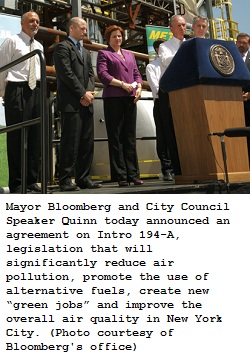New ethanol blender pumps from Dresser Wayne and Gilbarco Veeder-Root have received final safety certification from Underwriters Laboratory, which will help fuel retailers meet increasing demand for renewable fuel by dispensing mid to high ethanol blends along with conventional gasoline, according to ethanol industry group Growth Energy.
 “We want to simplify alternative fuel adoption so retailers can feel more confident about embracing this developing energy segment,” said Scott Negley, Dresser Wayne director of Alternative Energy Products. “With this approval, our entire eco fuel product portfolio is now UL certified. This helps our customers achieve and maintain regulatory compliance as they add eco fuels to their product offerings.”
“We want to simplify alternative fuel adoption so retailers can feel more confident about embracing this developing energy segment,” said Scott Negley, Dresser Wayne director of Alternative Energy Products. “With this approval, our entire eco fuel product portfolio is now UL certified. This helps our customers achieve and maintain regulatory compliance as they add eco fuels to their product offerings.”
Growth Energy CEO Tom Buis notes that final certification for this fuel dispensing equipment is an important step toward providing higher level blends of ethanol directly to consumers to help decrease our dependence on oil. “Every blender pump we install will help make our country more energy independent and more secure, all while giving consumers a choice at the pump that includes domestic, renewable ethanol,” said Buis.
The Dresser Wayne dual hose ethanol blender blends gasoline and ethanol in both dispenser hoses enabling it to offer low blends on one hose for conventional vehicles and mid- to high-level blends on the other hose for flexible fuel vehicles. UL has also extended certification to include Gilbarco Encore blenders with the flexible fuel option.





 The
The  The groups pointed to President Obama’s stated goal of reducing reliance on oil imports and reiterated that expanded use of domestically produced ethanol will help accomplish that goal. According to the letter, “Decreasing dependence on foreign oil is a key to this country’s environmental, energy and security policy, and the EPA must provide a practical and workable solution to the ethanol blend wall issue and do so soon. Allowing E12 for all motor vehicles as an interim step to a full waiver for E15 is a reasonable and defensible first step to solve the immediate problem.”
The groups pointed to President Obama’s stated goal of reducing reliance on oil imports and reiterated that expanded use of domestically produced ethanol will help accomplish that goal. According to the letter, “Decreasing dependence on foreign oil is a key to this country’s environmental, energy and security policy, and the EPA must provide a practical and workable solution to the ethanol blend wall issue and do so soon. Allowing E12 for all motor vehicles as an interim step to a full waiver for E15 is a reasonable and defensible first step to solve the immediate problem.” The groups’ letter reviewed previous EPA findings, policy positions and research to demonstrate the reasonableness of approving E12 for use in the nation’s automobile and light truck fleet. “The EPA has a clear basis and the authority to approve E12. While we think delay on E15 is unnecessary and will slow progress on expanding the use of ethanol, we all agree that approval of E12 is a vital interim step that EPA can and should take,” the groups wrote. All three groups remain fully committed to efforts to approve the use of E15 for all vehicles.
The groups’ letter reviewed previous EPA findings, policy positions and research to demonstrate the reasonableness of approving E12 for use in the nation’s automobile and light truck fleet. “The EPA has a clear basis and the authority to approve E12. While we think delay on E15 is unnecessary and will slow progress on expanding the use of ethanol, we all agree that approval of E12 is a vital interim step that EPA can and should take,” the groups wrote. All three groups remain fully committed to efforts to approve the use of E15 for all vehicles.




